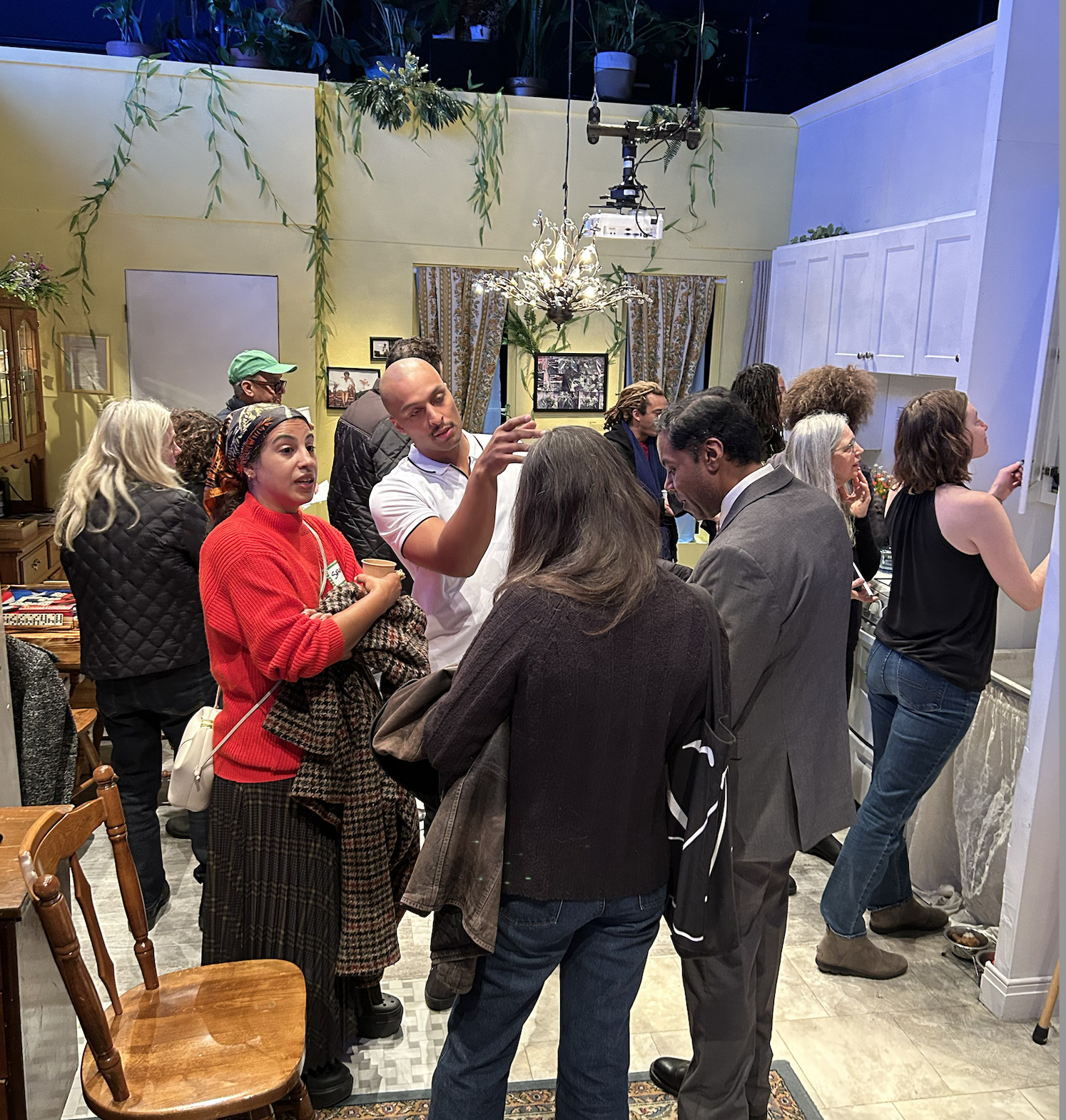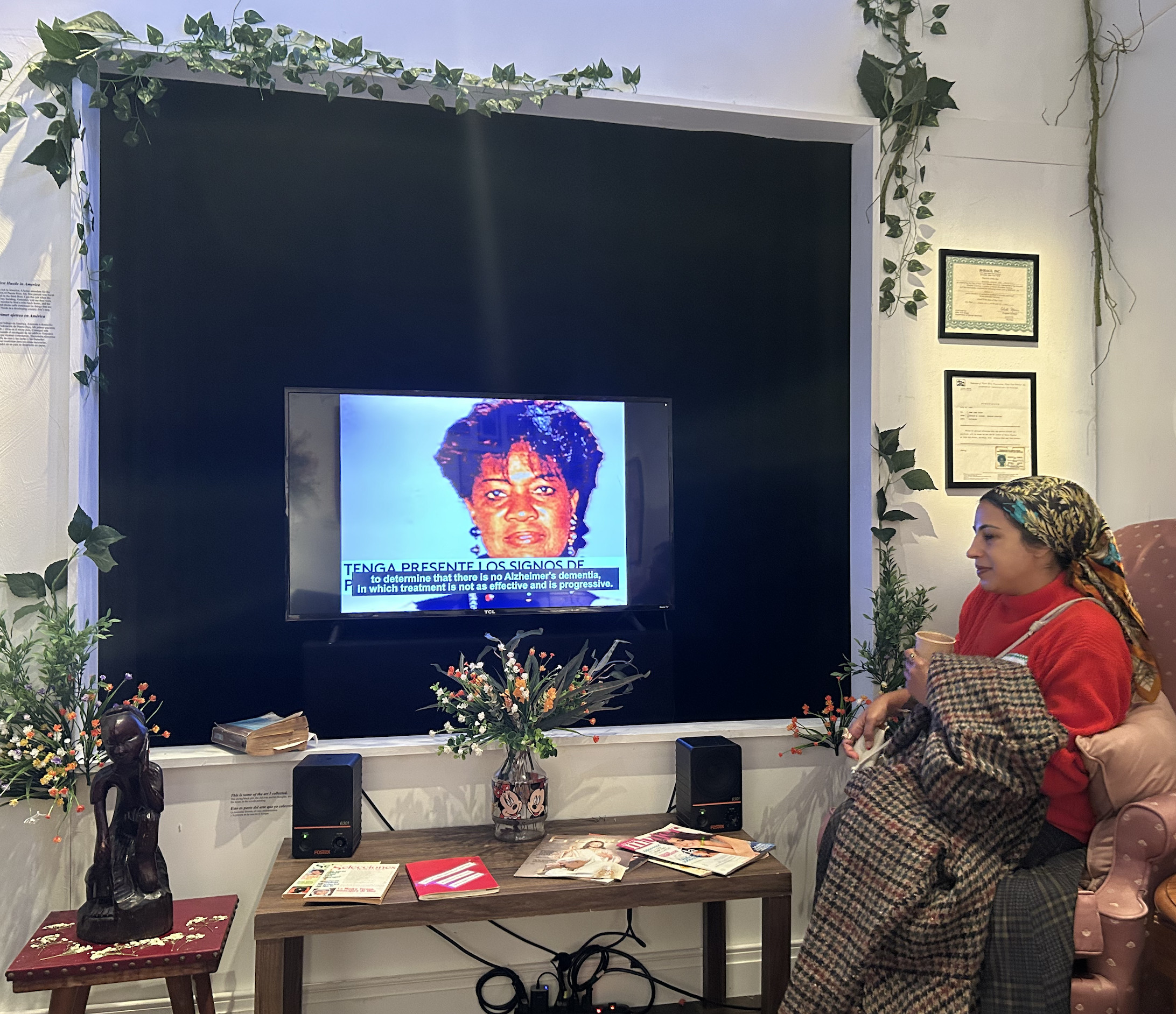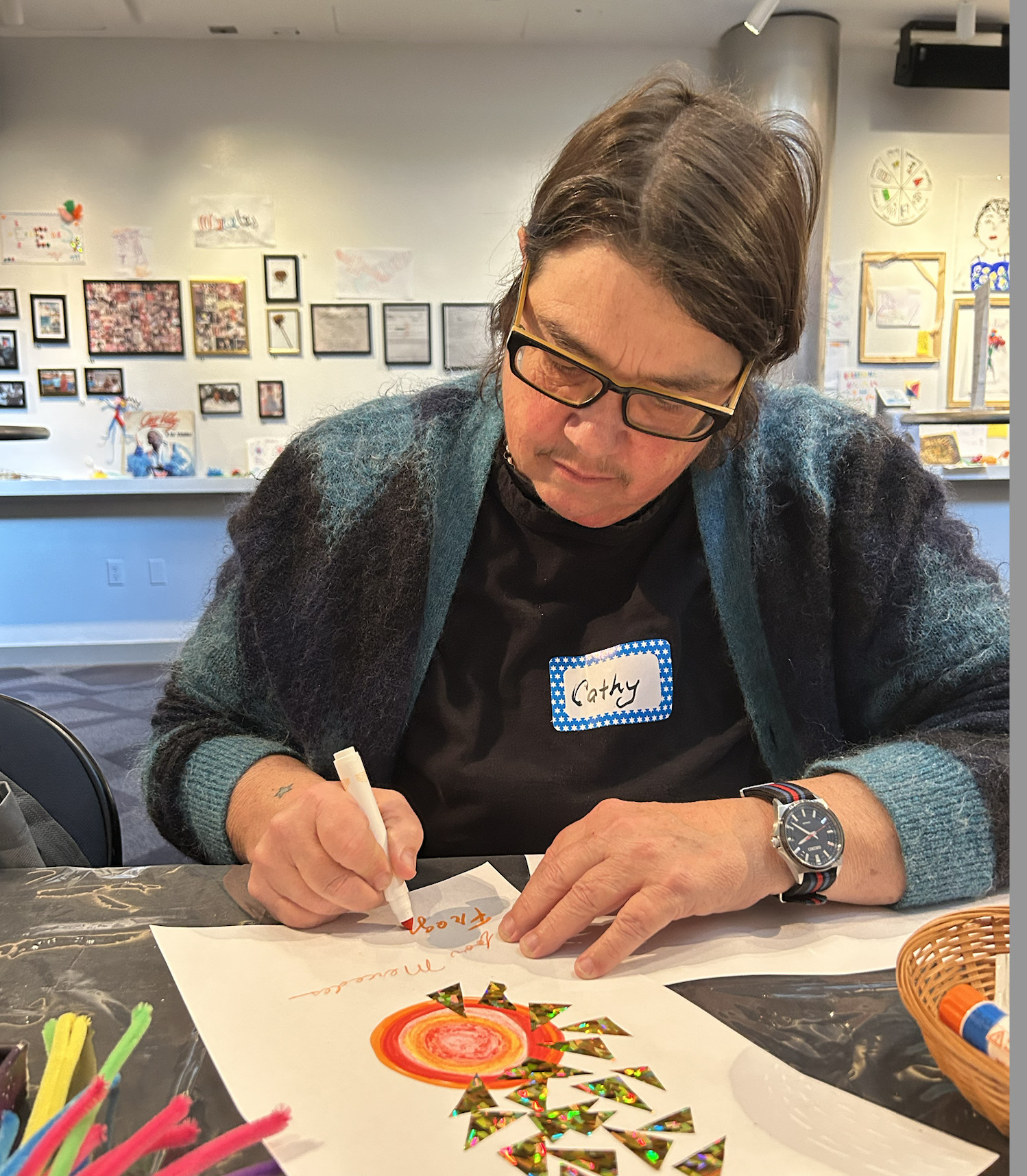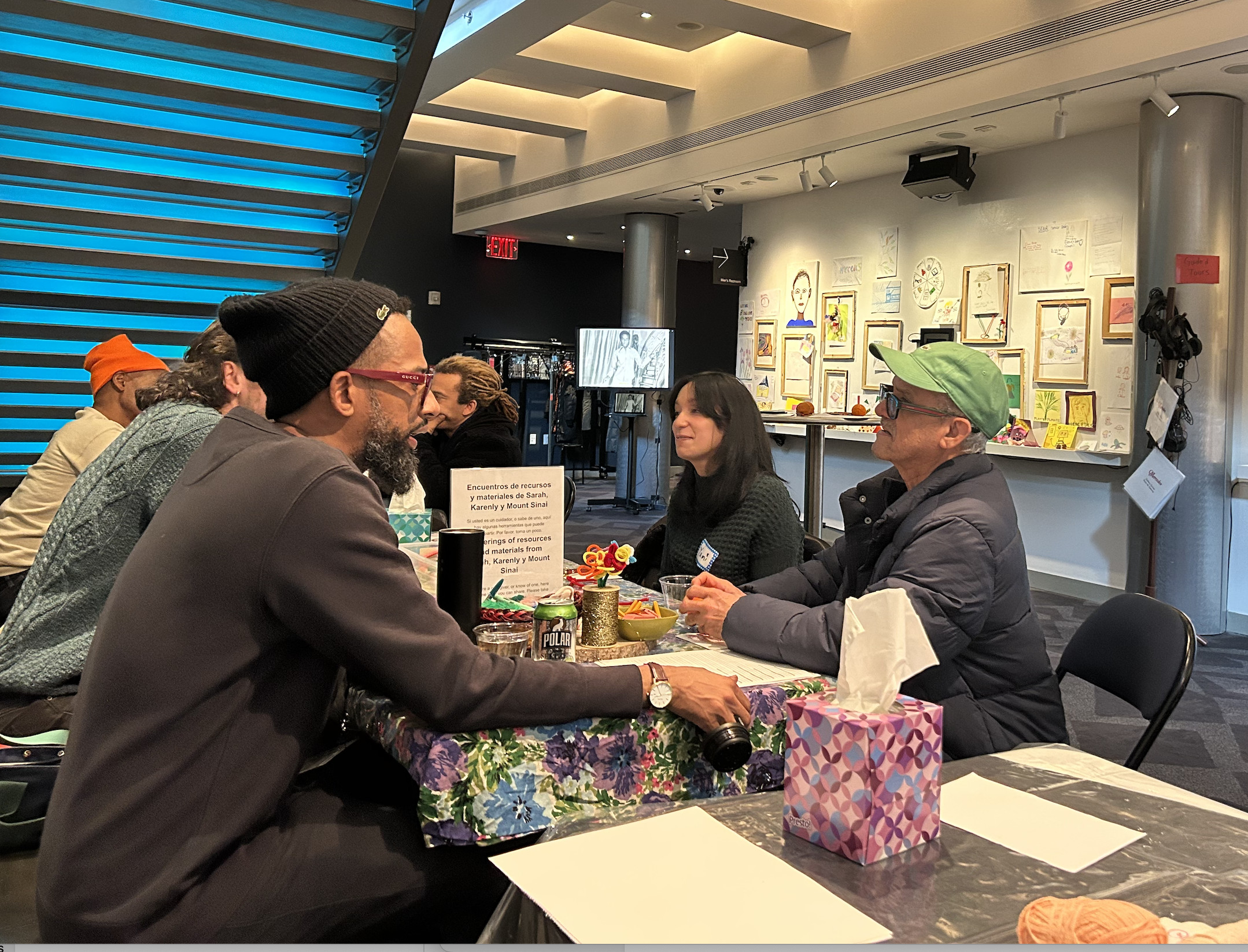



Yesterday, I had the pleasure of being in the audience at Mercedes: Part 1, “a multidisciplinary documentary, gallery, and healing room installation,” by Modesto Flako Jimenez at BAM. I had no idea what this was when I bought two tickets, but my own work focuses on art and community care, and I had participated in Textilandia, a self-propelled version of his Taxilandia that was an outdoor, self-guided, and hence safe art experience during COVID lockdown. My memorable 2021 experience on the streets of Bushwick turns out to be just one iteration of his sprawling “decolonial franchise,” continuing into this latest work about his grandmother, dementia, and the LatinX diaspora. But, in line with my particular preoccupations and practice here, on this recently reanimated blog, I will restate …
I had the pleasure of participating in Mercedes: Part 1, with my friend Cathy (who I had invited along; we ate brunch first). Our participation in this audience included:
- talking to actors (playing family members) as well as other audience members as we walked through the installation: a multi-room reimagination of Mercedes’ Bushwick home rich with items from a personal archive of her photos, notebooks, receipts, letters, art, magazines, glassware, and plants. We were invited to consider and touch all that was there.
- talking to my friend Cathy as we walked through the installation and thought about the grandson’s gentle and generous use of the archive of his lost family member
- listening to and watching an art video while sitting in these rooms and surrounded by precious things. In the video, we learn of Flako’s grandmother Mercedes, who he cared for with others in his family, some of them interviewed, as well as larger issues around dementia and the LatinX community
- talking to an art therapist, an M.D. who specializes in dementia care, and Flako (who had all been seen earlier in the art video) during the facet of the experience where we also made art at tables replete with craft supplies
- talking to my friend Cathy again, this time while we were making art. We reflected on our own parents’ transitions into old age (and our own). What are we doing? What are our duties and responsibilities?
- drinking coffee as we waited to enter the installation; eating a cookie at Mercedes’ kitchen table before we began to walk around her rooms; being offered snacks during the art-making phase
- installing our own art on the wall as our final act of participation before leaving the building
- thanking Flako and the other participating art workers on our way out
- continuing to talk as we left the theater and entered the street. What an amazing trip we had just taken between Art (the kind supported by the Art World), art (the kind made by the rest of us, and even Cathy when her hands touch materials but there is no connection to authorship, career, or audience), and what Flako calls “community work” (doing this art/Art thing in the spaces where people meet and do otherwise).
My interest in practices, and their audiences, that can feed us in the interval between election and inauguration (and then beyond) allows me to note all the verbs necessary to describe being an audience of this work (invite, listen, watch, talk, walk, consider, touch, make, think, install, thank, offer, eat, drink, thank). Then, I see how these align with all the nouns chosen by Flako to describe his practice: “a Dominican-born, Bushwick-raised, multi-hyphenate artist. As a poet, playwright, educator, actor, producer, and director his work exists in and explores the intersections of identity, language, mediums, cultures, and communities found in his personal life and beyond.”
We need artists and audiences, funders and venues, to allow for more opportunities at the intersection of verbs and nouns: where being an audience is so many doings, and being a person is the multitude we are.